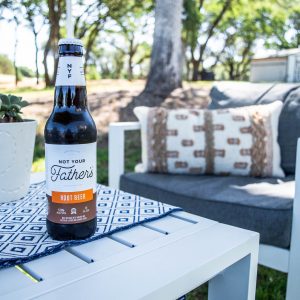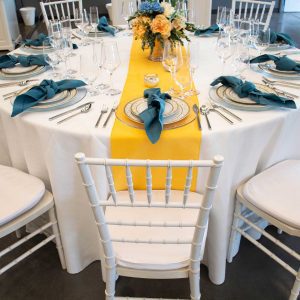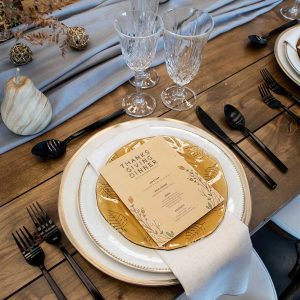
Walnut Stained Farm Style Table, Lucca Ivory with Gold Band Chop Plate, Victoria Dinner Plate, Venice Amber Salad Plate, Harvest Oatmeal Napkin, Arya Flatware, Charlotte Water Glass, Charlotte Wine Glass, Charlotte Champagne Glass, Delilah Cloud Oversized Runner.
Why have a seating plan?
Putting together a seating plan and writing out some quick place cards is one of the simplest ways to elevate your Thanksgiving and make the entire evening feel more classy, put together, and intimate. When guests see a place setting just for them, it makes them feel valued and like you’re glad that they are here. Plus, the right seating arrangement helps the conversation flow for hours and encourages your guests to mingle with more than their usual crowd.
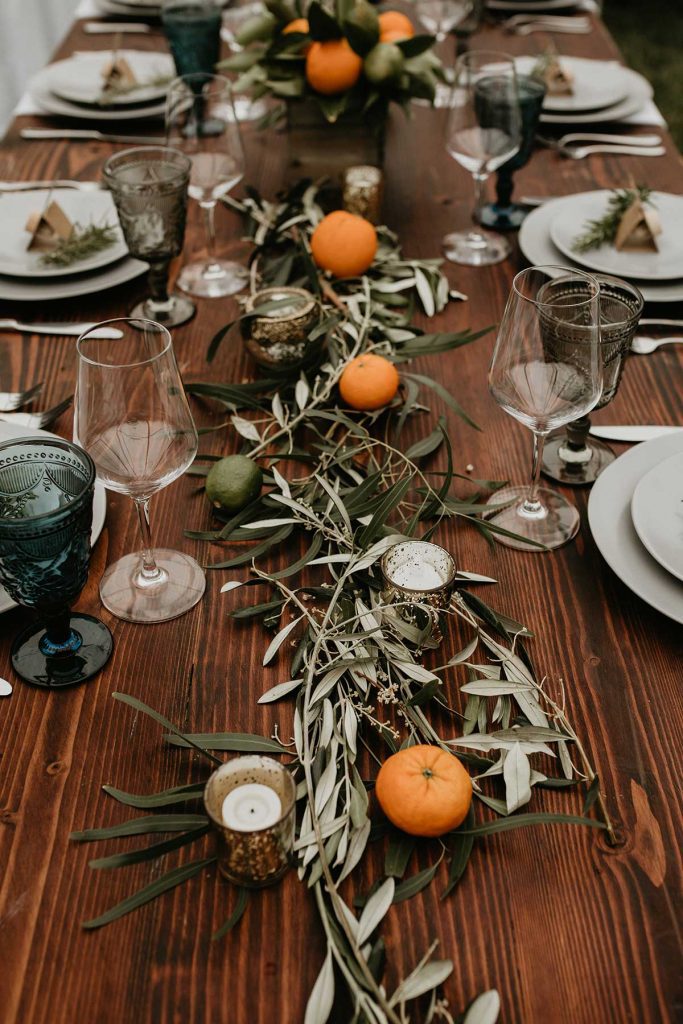
Ledge Wine Glass, Peacock Dixie Goblet, Lucca Grey Dinner Plate, Lucca Grey Salad Plate, Allison Flatware. Photo by Lauren Dixon Photography.
Some tips to keep in mind
When it comes to making your seating plan, you as the host probably know best where everyone should be seated. Use your judgement and really think about each guest’s personality traits and typical behaviors and how that might mesh with other guests. To start, make sure at least one host is at each table, and that they are seated somewhere with easy access to the kitchen so that getting up for drink refills or to serve up pie doesn’t have you squeezing past everyone’s chairs. Keep couples near each other at the same table, but don’t seat them right next to each other to encourage them to participate in a bigger conversation. If you have any left-handed guests, try to seat them on a corner to keep them from bumping elbows. And if you happen to have any guests who are excellent conversationalists and charmers, seat them near the middle of the table where they can interact with everyone and keep the conversation lively all evening.
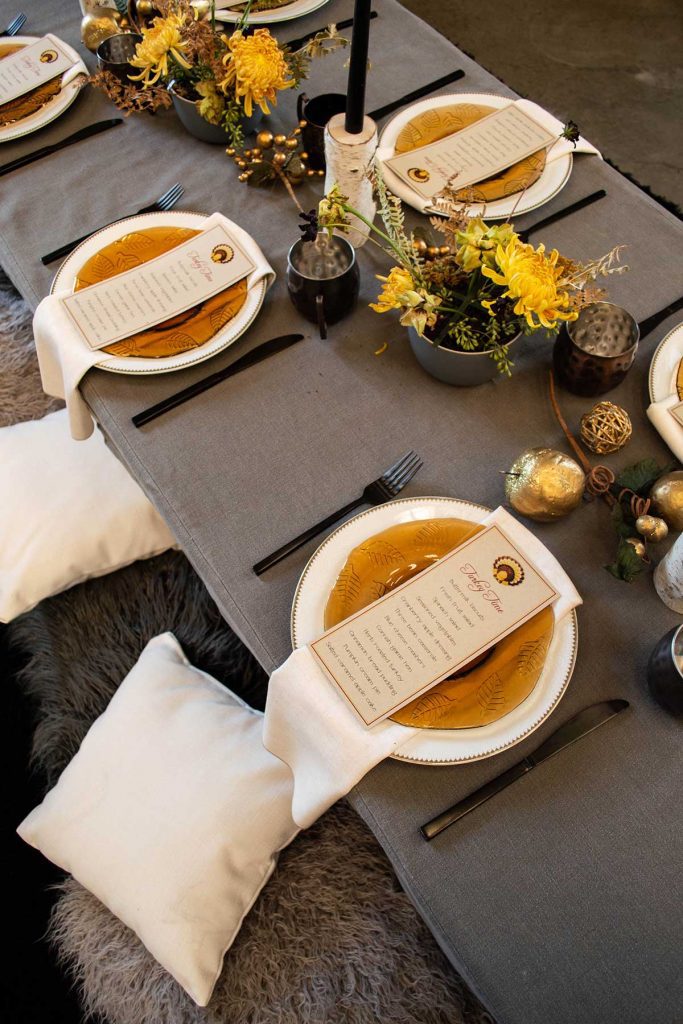
6’ Child’s Table, Linen Stone Table Linen, Victoria Dinner Plate, Venice Amber Salad Plate, Arya Flatware, Copper Mug, Harvest Oatmeal Napkin, Brigette Pillows.
Advice for the kids’ table
To avoid just seating everyone under 18 years old at one “Kids’ Table,” think about all the children in attendance and where they might do best. Younger kids who still need assistance with their dinner may do better seated in a high chair or booster seat between their parents. Some teenagers may prefer sitting with the adults as opposed to babysitting the younger kids at a separate table (but try to separate more than one teen so that they are encouraged to join in the adult’s conversation). If you are left with at least a couple of kids who are close in age and would be (at least mostly) well-behaved and self-sufficient at their own table, set them up with their own table and a couple extra activities to keep them busy throughout dinner and dessert (coloring pages with crayons, a box full of pipe cleaners, or simple games like tic-tac-toe).



